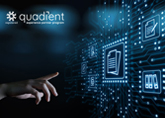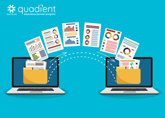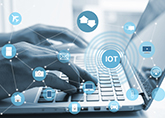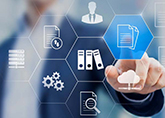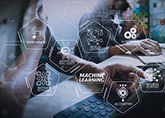

Top 10 technology changes that will shape our lives at home and work.
Change is typically iterative taking a long-sustained timeframe such as sediment filling a lakebed or trees growing slowly in a forest. Occasionally, we experience dramatic cataclysmic change such as earthquakes, volcanoes, hurricanes, floods and fires. These incidents can change the world around us in a matter of days. The global COVID-19 pandemic the world is facing today is one of these cataclysmic events which will result in widespread large-scale sudden change.
Based on conversations with colleagues, research from numerous experts and personal perspective, I have assembled my personal prediction as to the top 10 list of post COVID-19 technology changes we can expect to impact society, our businesses and us as individuals. If you are going to remain viable you must learn to ride this wave of change both in your business and your personal life.
Yes, this is not the full list of all that may happen, and I even had a list of topics I considered but did NOT make my final list. Here are what did NOT make the top ten.
Smart InfrastructureLegacy TechnologiesSocial Distancing3D PrintingSupply Chain
5GCloudPrivacyOffshoreJob Loss
Read on to learn what is contained within the top 10 list
“We always overestimate the change that will occur in the next two years and underestimate the change that will occur in the next 10. Don’t let yourself be lulled into in action “
Bill Gates cofounder of Microsoft
1. Contactless Interfaces & Interactions
Touch screens are a relatively new phenomenon that has gained widespread acceptance. Cash has been around as long as modern society. Both of these require physically touching surfaces something that is newly objectionable to people around the globe. In the very near future this will continue to expand though it needs to reach the almost 2 billion people that are not on banking and don’t have access to reliable Internet service. There are already a variety of contactless interfaces such as:
- Voice – Amazon Alexa, Apple Siri and Google Assistant.
- Machine Vision – Facial and Gesture Tracking Applications.
- Tap & Go Payments – American Express, Capital One, Wells Fargo, and Chase Visa cards.
- Mobile Phone – e-Wallet, Apple Pay and Venmo.
2. AI Enabled Drug Development
We are seeing the speed and urgency of both a treatment and vaccine for COVID-19. The expectation of speed to market will transition to all other drug development operations across the full pharmaceutical development lifecycle. This will continue as a new way to function.
- Deep Learning – Used to crosscheck results throughout millions of chemical reactions expanding capabilities well beyond the laboratory table.
- Data Mining – Reviewing historical data sets to predict clinical outcomes and create designs.
- Natural Language Processing – Scanning text across volumes of medical literature to uncover insights.
- Pipeline Management – Collaboration across many drugs simultaneously as opposed to isolated lab results.
- Molecular Engineering – Sequencing validation and mapping of genome capabilities for all new development.
3. Telemedicine
To curb traffic at hospitals, healthcare practitioners began implementing consultations via video during this pandemic. Initial success has been very positive with less waiting and more face time with the physician. Healthcare regulations, at the time they were written, did not envisioned Telehealth. Changes to coverages are required to ensure acceptance by insurance.
- Virtual Consultations – Enabling individuals to meet with your doctors without having to travel and without being surrounded by other potentially infectious patients. This has the added benefit of allowing skilled physicians to service remote populations.
- Wearables – Personal IoT devices tracking health statistics vital signs, activity and more. It will be commonplace to track not just steps but your overall health profile.
- Chatbots – Performing initial diagnosis based on identified systems from connected smart IoT devices and patient self-reporting.
4. Online Shopping
Businesses believed their online shopping was ready until COVID-19 stressed the systems like never before. Companies of all types and sizes are now required to have effective online services even while they continue to maintain a brick-and-mortar operation. Just like a website was once a nice to have, online shopping has transformed to a must-have. There has been and will continue to be a loss of foot traffic due to stay-at-home policies. Pre-crisis instore sales generated over 80% of retail transactions and we all know this will quickly decrease. Areas to consider when thinking about the future of online shopping.
- Changed Demand – Quarantining has changed consumers’ need for certain products and services such as professional clothing. No longer business casual, we are just casual.
- Spending Decrease – Income losses have decreased consumers’ propensity to spend.
- Logistics – Enhancements to the receiving, packing and delivery systems.
- Robot Deliveries – New protocols to safeguard the sanitary condition of delivered goods.
5. Robots and Drones
The world now understands how deeply we rely on human interactions to make things work. At the same time robots don’t get sick. It has been predicted manufacturing jobs will be replaced, even so, new jobs will be created in the process. We need plans to provide training and support so employees can embrace the change. Wide use and expansion can be seen in several new areas as a result of this virus.
- Aerial Disinfection – Drones map large stadium arenas and while attached to vats of cleaning fluid circle the entire space in minimal time to disinfect huge open areas in matter of hours.
- Ultraviolet Maid – Right out of the Jetsons, a real life “Rosie the Robot” entering and disinfecting hotel rooms every day with UV light rays.
- Robotic Baristas – Taking your order via mobile app then preparing and delivering your favorite beverage while you sit at your local café.
- Deliveries – Mechanized delivery of groceries and other good curbside or to your home.
- Vital Signs – Systematically taking and monitoring vitals within a healthcare system.
- Remote Workers – Working from the safety of their home skilled technicians, operating robots and drones from a distance.
6. Digital Events & Entertainment
Stay at home requirements have reduced in-person interactions significantly, but human imagination has brought the party online and it is here to stay. There is less of a capacity issue and the new delivery model permits attendees from around the world at any time of the day. We will continue to see an increase in hybrid events taking place both in person and digitally. Events we are already experiencing.
- Concert Streaming – With venues shut down live streamed music content is becoming common.
- Dance Parties – DJ D-Nice hosts Instagram Live dance parties.
- Movie Releasing – 2020 Movies Streaming Online Early Due to the Coronavirus
- Virtual Museums – Guggenheim, National Gallery of Art, Van Gogh Museum and J. Paul Getty Museum each provide virtual tours.
- Charitable Dinners – Hollywood Is reinventing charity galas.
- Online Gaming – Has seen an 80% growth as people stay away from casinos but continue to think they can break the bank.
7. Esports
Sports have been a mainstay of societies culture since the Olympics began in 776 B.C. During the past 2000 years shifts in interests have changed many times over. We are now about to experience a new shift. F1 Exports Series is the newest platform providing professional esports. We also have live gaming events. I expect esports will be created in the big four: Football, Basketball, Hockey, and Baseball. Where and how they are consumed is much different than traditional network broadcast TV.
- F1 Exports Series – Providing both professional and amateur esports
- Twitch – Gaming streaming platform.
- YouTube Gaming – Highlights and replays.
- Reddit – Post-match analysis.
- Instagram – Memes and reactions.
8. Retail & Food Distribution Centralization
As it is predicted many as 75% of all restaurants are likely to close, we will find it is required to have a more efficient centralized distribution of food and other goods. The future must center on minimal customer contact. The near future will have automated systems to bring the products and food to your vehicle using app-based ordering. Large chains with a robust online capability are likely to dominate this space such as Costco, Walmart and Amazon.
- Robotic Delivery – Bringing goods to either your home or a central depot.
- Drive-in Pickup Centers– Drive-in grocery shopping much like drive-in fast food.
- Food Prep Centers – Centralized restaurants with a mall food court format.
- Drive Thru Malls – Drop-off and pickup areas intergraded into shopping malls.
9. Distance Learning
Globally, school and university closures impacted 1.6 billion students. The online learning that occurred for 8-12 weeks will continue in some format as we move into the next school year. While there will be an increase in on-line learning, the radical change will be the use of virtual / augmented reality and ultimately holographic learning, so students view the concepts that are taught and visualized them during class sessions. This will help them to clarify the concepts in a better manner and will enhance the way students learn. This may create a wider divide in terms of digital readiness and income level. Distance learning is likely to create economic pressure on parents, who need to stay home to watch children.
- Virtual Daycare – Sitter Stream an on-demand online babysitting service, launched after the pandemic, giving parents an alternative to bringing an outsider into their homes.
- Early Start/End – Start earlier while shifting to remote during flu season.
- No Breaks – Once on campus students will not be permitted to leave.
- Virtual & Augmented Reality – Delivering a new immersive learning experience at tools such as ClassVR.
- Holographic – Projection technologies are revolutionizing education by bringing in interactive professors and examples.
10. Remote Work
Companies have asked employees to work from home and they may stay there. Separate from technology, but an important thought is demand for commercial real estate is likely to plummet. Though remote work saves commute time and provides more flexibility there can be both loneliness and lack of work-life balance. Also expected are complications in labor law issues, such as a safe work environment, taxes, security, and privacy. As employees return to a physical workspace, the socially distant requirements limit watercooler conversations, defeating many advantages of an in-office environment. As there is likely to be less benefits to returning to the office, we need to get the most out of our virtual atmosphere. Many companies are focused on expanding the virtual workplace tools some of the new players in this fast-growing space include:
- Chat Applications – Changing the way employees talk over the cubical walls are Flowdock, Mattermost, and Rocket Chat.
- Employee Engagement – Glint has a vision to make people happier and more successful while working remotely.
- Employee Performance – Remotely manage performance expectations, set goals, and provide feedback with tools like SAP SuccessFactors and Trackstar.
- File Sharing – Dropbox, Google Drive and Sharepoint lead in this space, but others are moving in.
- Project Management – Keeping team organized and on schedule are tools like Asana, Basecamp, Monday.com and Trello.
- Video Conferencing – It’s not just Zoom, but companies like Fuze, GoToMeeting, Skype and WebEx and are all jockeying to build the next must have features
Conclusion
Change is happening and it is happening now all around us. New technologies will quickly become part of our normal everyday work and personal lives. As Bill Gates once said, “The advance of technology is based on making it fit in so that you don’t really even notice it, so it’s part of everyday life.” These changes will happen so fast and seamlessly you need to climb onboard or get left behind. Which one or two will you select as a focus for you both professionally and personally. In summary here is a list of The Technology Transformation Caused by Covid-19.
- Contactless Interfaces & Interactions
- AI Enabled Drug Development
- Telemedicine
- Online Shopping
- Robots and Drones
- Digital Events & Entertainment
- Esports
- Retail & Food Distribution Centralization
- Distance Learning
- Remote Work
By John Kullmann | June 15th, 2020 | General
Recent Blogs


Advantages of Technology and IT Companies Partnering with Staffing Firms Offering Visa Sponsorship
Read Blog

CCM in the Cloud: The Advantages of Cloud-Based Customer Communication Management
Read Blog

The Rise of Intelligent Automation: A Roadmap for Success
Read Blog


 Home
Home Services
Services
